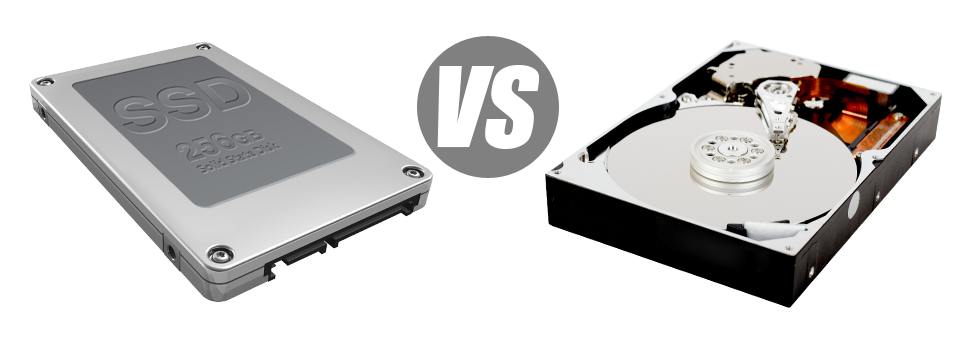These days, pretty much all completely new computing devices include SSD drives in place of HDD drives. You’ll discover superlatives about them everywhere in the professional press – they are a lot quicker and conduct better and they are actually the future of desktop computer and laptop computer production.
Having said that, how do SSDs fare in the web hosting environment? Could they be reliable enough to replace the proven HDDs? At TMV Host, we are going to assist you to much better see the distinctions in between an SSD and an HDD and determine which one most closely fits you needs.
1. Access Time
A result of a revolutionary new solution to disk drive performance, SSD drives permit for much quicker data accessibility speeds. Having an SSD, file access times are much lower (just 0.1 millisecond).
HDD drives depend on rotating disks for files storage purposes. When a file will be used, you have to await the correct disk to reach the correct position for the laser beam to reach the data file involved. This translates into a typical access rate of 5 to 8 milliseconds.
2. Random I/O Performance
On account of the same radical technique enabling for a lot faster access times, it is possible to benefit from improved I/O effectiveness with SSD drives. They will carry out double the procedures throughout a specific time in comparison to an HDD drive.
An SSD can handle at the very least 6000 IO’s per second.
Having an HDD drive, the I/O performance steadily raises the more you employ the drive. Even so, in the past it actually reaches a particular limit, it can’t proceed quicker. And because of the now–old technology, that I/O cap is significantly less than what you could have with a SSD.
HDD can only go as much as 400 IO’s per second.
3. Reliability
SSD drives are lacking just about any rotating elements, which means that there’s much less machinery inside them. And the fewer actually moving elements you will find, the lower the likelihood of failure will be.
The standard rate of failure of any SSD drive is 0.5%.
Since we have noted, HDD drives make use of rotating disks. And something that employs a number of moving elements for lengthy time periods is susceptible to failing.
HDD drives’ typical rate of failure can vary among 2% and 5%.
4. Energy Conservation
SSD drives are much small compared to HDD drives as well as they do not have virtually any moving parts at all. As a result they don’t make so much heat and require considerably less energy to function and less power for cooling reasons.
SSDs consume between 2 and 5 watts.
HDD drives can be known for being noisy; they’re liable to getting too hot and in case you have several disk drives inside a hosting server, you must have a further cooling system just for them.
All together, HDDs use up somewhere between 6 and 15 watts.
5. CPU Power
Because of SSD drives’ greater I/O effectiveness, the leading hosting server CPU can work with data file demands much faster and preserve time for additional functions.
The regular I/O wait for SSD drives is only 1%.
HDD drives support sluggish access rates rather than SSDs do, resulting in the CPU being required to hang on, although reserving resources for the HDD to locate and return the demanded data file.
The regular I/O wait for HDD drives is about 7%.
6.Input/Output Request Times
The bulk of TMV Host’s brand new web servers moved to exclusively SSD drives. Our very own tests have demonstrated that having an SSD, the typical service time for an I/O request whilst building a backup stays under 20 ms.
All through the very same lab tests with the same hosting server, now fitted out utilizing HDDs, effectiveness was noticeably slow. During the hosting server data backup procedure, the normal service time for any I/O demands ranged between 400 and 500 ms.
7. Backup Rates
An additional real–life enhancement is the rate at which the backup was developed. With SSDs, a hosting server back up today will take under 6 hours implementing our hosting server–enhanced software.
We worked with HDDs mainly for several years and we’ve excellent expertise in how an HDD runs. Backing up a web server furnished with HDD drives can take around 20 to 24 hours.
To be able to at once boost the overall performance of your respective web sites and not having to alter any kind of code, an SSD–powered website hosting service is really a really good solution. Have a look at our Linux shared packages packages and then our Linux VPS hosting packages – these hosting solutions offer swift SSD drives and can be found at cheap prices.
Hepsia
- Live Demo
Service guarantees
- Each one of our Virtual Private Servers is put together for you at absolutely no cost. 99.9% network uptime. Full admin server access.
Compare our prices
- Preview the resources and features coming with our Virtual Private Servers. You could begin with a cheaper VPS Hosting package and upgrade with only a click as your needs grow.
- Compare our hosting plans
Contact Us
- You’re able to get in touch with us 7 days a week by email or by using our ultra–fast ticketing platform. We offer a 1–hour reply time frame guarantee.














